The sciatic nerve is a large nerve that extends from the spinal cord’s lower end and branches out to each buttock and then down each thigh to the knee and calf. Sciatica refers to pain that follows the path of the sciatica nerve. It can be an intensely painful condition that makes sleeping and other activities very difficult. There are steps everyone can take to prevent sciatica.
How to Prevent Sciatica
Sciatica develops for various reasons that include a herniated disk, spinal stenosis, inflammation due to a disease like arthritis and bone spurs on the spine. The pain associated with sciatica is often severe because the sciatic nerve is the largest nerve in the body. Pain usually radiates down one buttock and into one thigh and calf. Besides pain, other symptoms include numbness or weakness in a leg muscle, knee pain, muscle tingling, muscle cramping, tingling in the toes or a combination of two or more symptoms.

A common question is: How to prevent sciatica?
Prevention is always the best course of action. According to the specialists, the best strategies for preventing sciatica include:
- Exercise – Exercising tops the list of prevention measures because it strengthens the abdomen and back muscles that support the spine. Numerous types of exercises are beneficial, including walking, swimming, Pilates and yoga. In particular, do core exercises and lower back exercises to reduce the chances of developing a herniated disk.
- Learn and practice proper lifting techniques – All too often, people improperly lift objects. It is not just the weight of something that leads to herniated disks. They put most of the pressure on their back during lifting when it’s the hips and legs that should be taking the brunt of the weight. It is important to keep the back straight while rising up with the hips and legs. If the item is too heavy to lift while using the right technique, find another way to move the item.
- Maintain good posture when sitting – Many people today sit for long periods of time and have poor posture while sitting. This doubles the impact on the spine, especially the lower back. When sitting or standing, keep your back straight and shoulders back to relieve the pressure on the back. Another good practice is to stand up and move around every 30 minutes when a job requires a lot of sitting.
- Do not smoke – The negative effects of smoking are many, and include contributing to disk degeneration.
Sciatic develops for different reasons, and one is age-related degeneration. Developing a healthy lifestyle is the best way to prevent painful conditions that makes it impossible to fully enjoy life.
Exercises to Prevent Sciatica or Reduce Pain of a Sciatica Flare Up
Sometimes, despite everything, people experience what is referred to as a sciatica flare up. It can be due to something like the piriformis, a small hip muscle, becoming tight and pressing on or pinching the sciatic nerve. Flare ups can also be treated with exercises that are specifically designed to relieve the pressure on the nerve.

Good exercises for managing sciatica flare-ups that also serve as exercises to prevent sciatica are activities like stretching exercises for the hips and lower back, and walking. It may be tempting to lie in bed for hours, hoping the pain will subside. The reality is that extended bed rest can contribute to the development of sciatica when back muscles weaken or because the pain associated with sciatica to worsen due to the pressure placed on the spine.
Stretches to Relieve Sciatica
1. Sitting spinal stretch
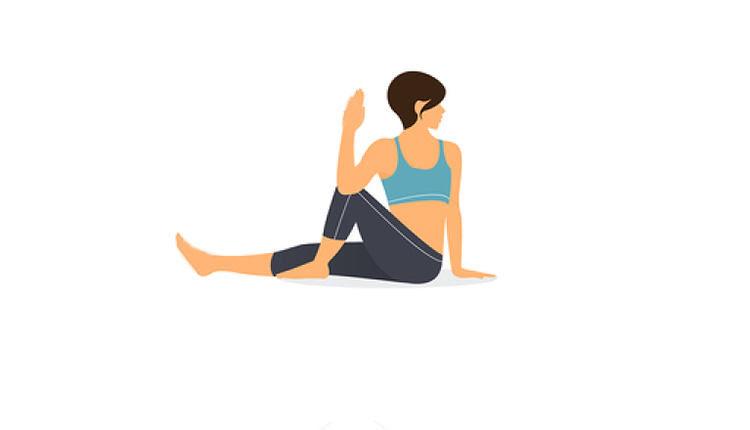
One of the best stretches for sciatica leg pain is the sitting spinal stretch. It addresses spinal compression causing sciatica pain by opening up space between the spine’s vertebrae.
- Sit on the mat or floor and extend your legs extended straight out in front of you while also flexing the feet upward
- Bend your right knee
- Put the right foot flat on the floor next to the left knee on the outside of the joint
- Put your left elbow on the outside of the knee joint which helps with the turning of the body
- Turn the torso and shoulders towards the right
- Hold for up to 30 seconds
- Repeat the exercise three times
- Switch sides and do the set of exercises again
2. Reclining pigeon stretch
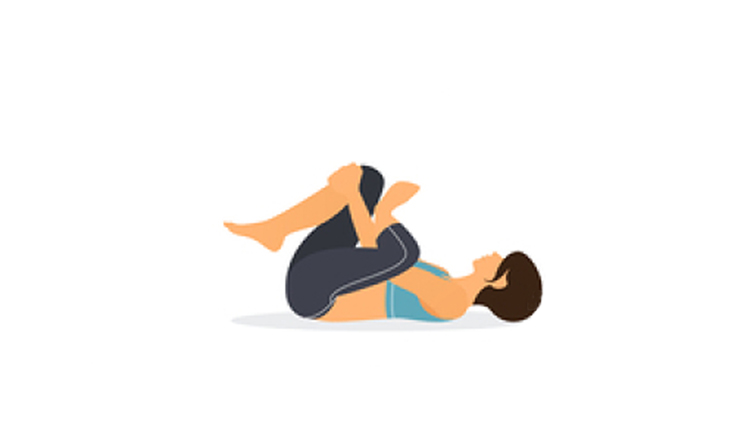
Among the common sciatica nerve stretch exercises is the reclining pigeon pose. This is a basic form of a yoga pose, and it works to open up the hips.
- Lie on the back
- Bring the right knee up to create a right angle
- Clasp your hands behind the thigh
- Lift the left leg and position the right ankle on the left knee
- Hold the pose for 10-20 seconds
- Repeat with the other leg
- Do the exercise with each leg three times
3. Back flexion stretch
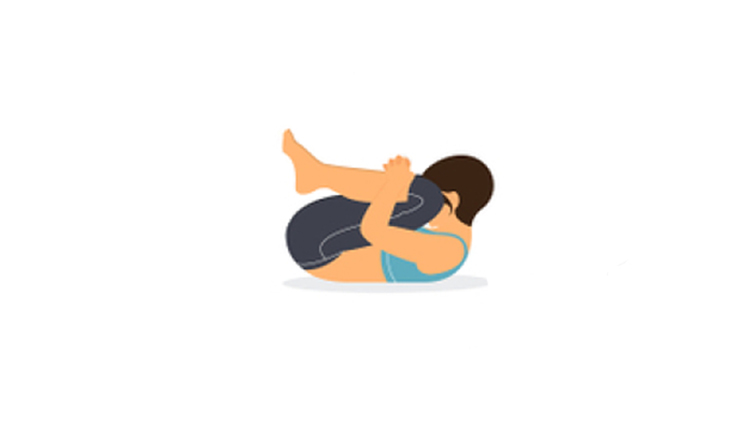
The back flexion stretch is one of the stretches to relieve sciatica that loosens up muscles in the spine and abdomen with the added benefit of increasing spinal mobility.
- Lie flat on your back
- Raise your knees to the chest while grasping your hands behind the knees (can place one hand behind each knee without grasping)
- Gently pull your knees towards the chest until you feel a stretch in the mid and lower spinal area
- An advanced stretch involves bringing the head forward and shoulders off the ground while pulling the knees toward the chest
- Hold for 5-10 seconds and then return to laying flat on your back
- Repeat the exercise three times
4. Hamstring stretch
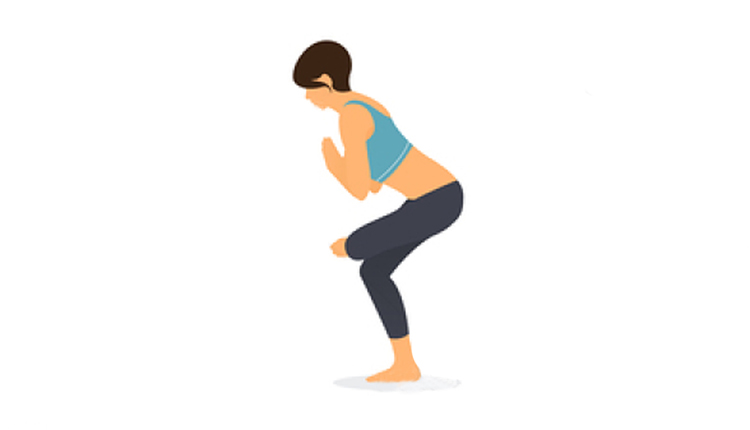
Another one of the best sciatica stretches is the hamstring stretch. It can loosen tight hamstring muscles that are causing tension in the pelvis and increasing lower back stress.
- In a standing position facing forward, cross the right foot over the left foot
- Keep the hips and shoulders aligned
- Place hands on the hips
- Bend at the waist over the right leg while keeping the back straight (the more the bend, the deeper the stretch)
- Hold the bend for 20-30 seconds
- Repeat three times
- Repeat the exercise with the other foot and leg
5. Sciatica stretch
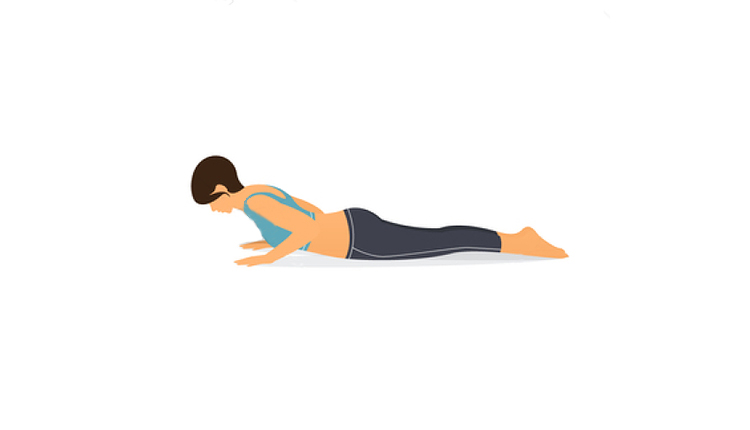
Exercises for sciatic leg pain are intended to relieve pressure on the sciatic nerve.
- Lie on your stomach
- Position the elbows under the shoulders while placing the hands flat on the floor
- Place the forearms flat or close to flat on the floor next to the chest area
- Lift the chest to arch the back enough to extend the spine from the neck to the tailbone
- Hold for 30 seconds
- Repeat two times
6. Knee to opposite shoulder
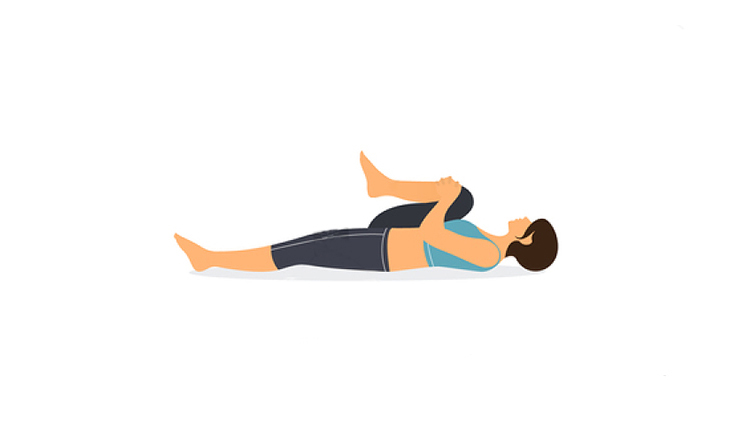
The knee to opposite shoulder is one of the stretches for sciatica that is simple to do and can loosen hip muscles that might be pressing on the sciatic nerve.
- Lie on your back with the legs extended
- Flex the feet so toes are pointing towards the ceiling
- Lift your right leg towards the chest
- Clasp your hands behind the knee
- Gently pull the knee across the body and towards the left shoulder
- Hold the pose for 30 seconds
- Repeat three times
- Do the same repetitions with the left leg and knee
Easing Sciatica Pain While Sleeping
Of course, everyone should get seven to eight hours of sleep each night. As noted, sciatica pain can intensify when in a prone position for an extended length of time because additional pressure is placed on the spine’s disks. People want to know how to prevent sciatica pain while sleeping.

One strategy is to lie flat on the back and bend the knees slightly while keeping the buttocks and heels flat against the bed. Place a pillow under the knees to provide support. Elevating the knees can take some of the pressure off the spine and thus the sciatica nerve.
Other suggestions include:
- Doing gentle stretching exercises right before getting into bed
- Sleeping on a firm mattress
- Soaking in a warm bath before bedtime
- Using over-the-counter pain medications
A medical professional can offer suggestions on how to prevent sciatica pain while sleeping that best fit the patient’s circumstances.
Managing Sciatica
Despite all efforts to prevent or self-manage sciatica, additional treatments are sometimes necessary. A doctor will assess the condition and determine the appropriate treatments to add to the self-management regimen. Treatments include prescription pain medications, physical therapy and steroid injections. Surgery is always a last resort for people with sciatica pain that worsens or pain that does not respond to non-surgical treatments.